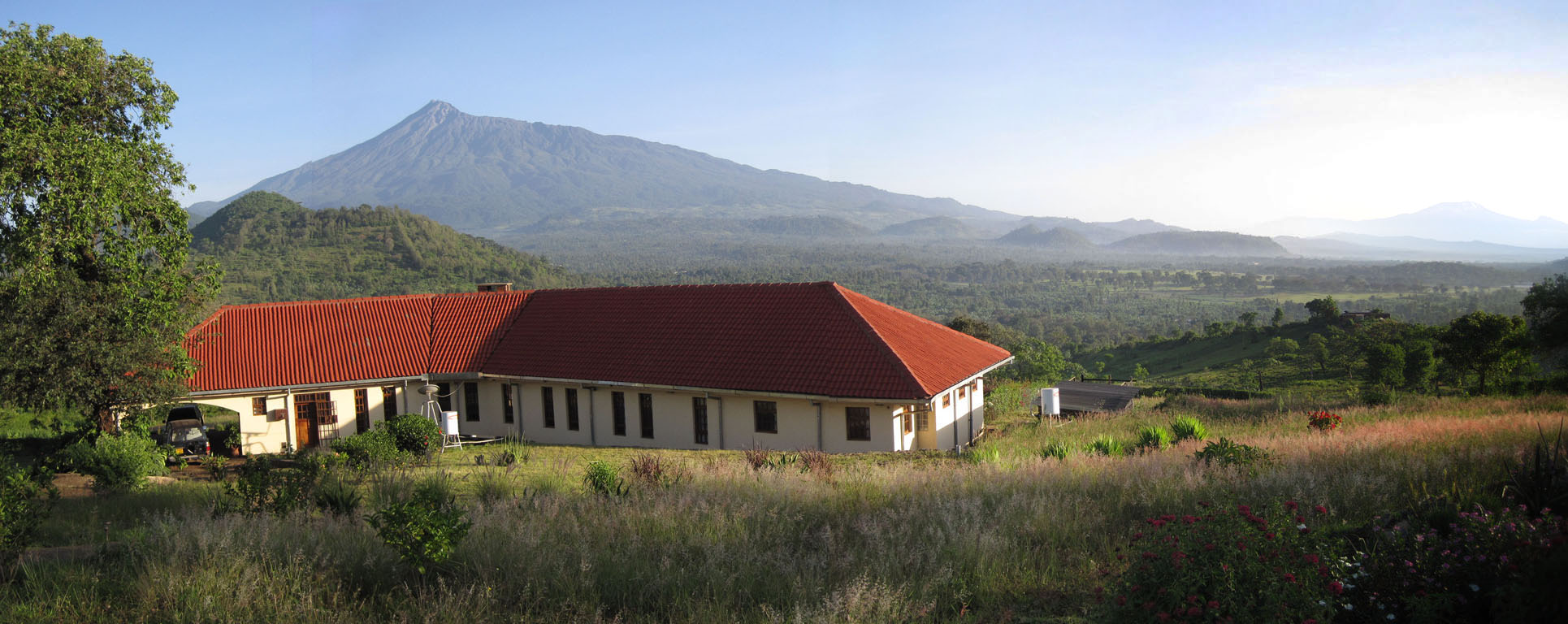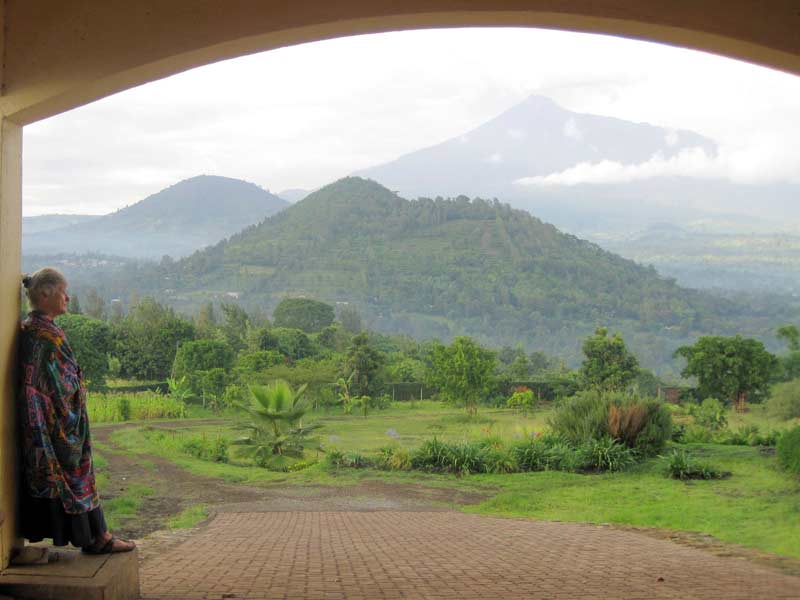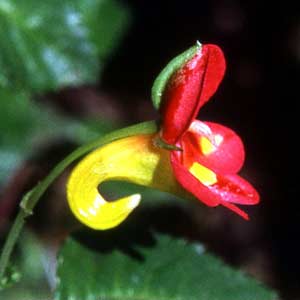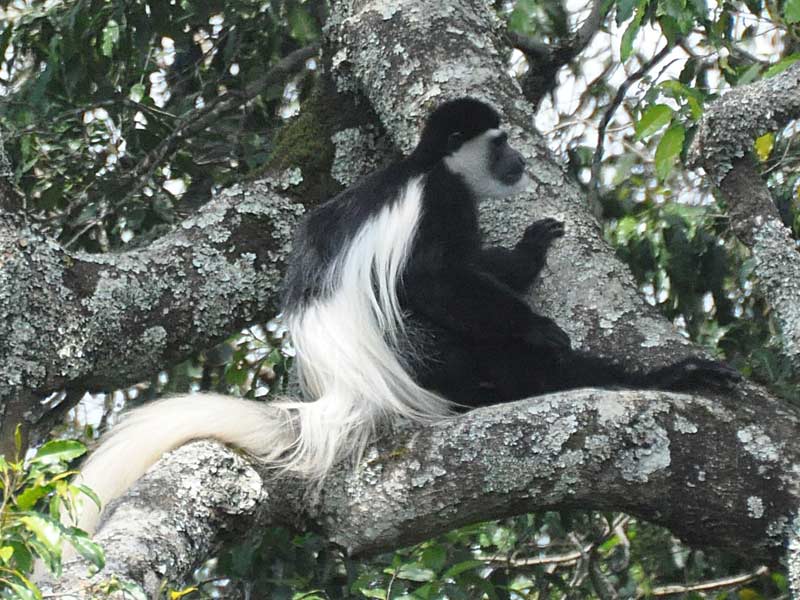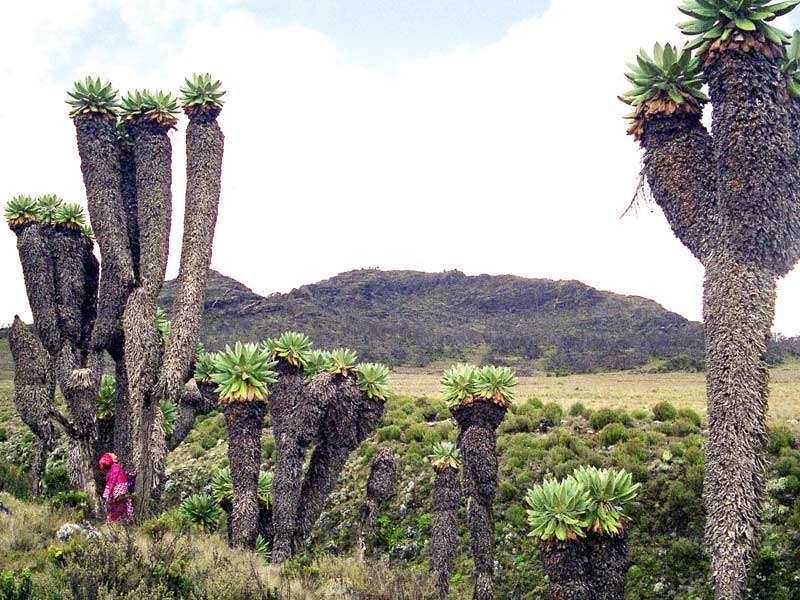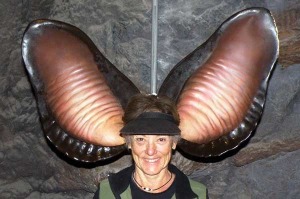
Here in Tanzania I am reminded of peoples’ different tolerance of noise. Back in Tucson, our close neighborhood has firm rules about noise pollution. No power tools or loud music between 10 p.m. and 8 a.m. One new resident complained angrily to the community about a loud rattly power tool being used on a metal roof at dawn – the culprit was a Gila woodpecker, who had found this to be a much more effective territorial display than drumming on a dead tree!
In our gardens, leafblowers are banned. However, we dispose of our tree prunings on site with a rather noisy chipper that converts them into mulch. Recently I was running it late in the evening and next day we received a complaint from a neighbor about 300 yards away. We worked it out amicably, that I wouldn’t chip after dark. So there are layers of noise prevention – mutually accepted constraints, policing by neighbors, and if that fails, policing by the police.
In the suburb of Arusha where we’ve been staying (picture), it’s a different story. Moshono Juu is about as densely populated as our Tucson suburb, but people are either more tolerant, less organized or both. A lot of the noise is due to religion, particularly evangelical preachers. They get behind a powerful amplifier and pour hellfire on the whole neighborhood. Last night it woke us up about 2:30 a.m. An insane bellowing in Kiswahili, the same phrases repeated over and over, definitely channeling a god of hate and vengeance rather than love. I wondered what sleepless cult attended this harangue. Would they be stoked on drugs or booze to endure such cacophony? And would our PC friend Dave call it “entitlement” if I, a mzungu (paleface), were to walk into an African village and demand a good night’s sleep? But then, what if other neighbors also wanted to sleep, yet didn’t dare make a fuss? This must be a powerful cult indeed. Would a wild-eyed enraged congregation fall on me with rocks and cudgels for interrupting their religious ecstasy?
Eventually, insomnia and curiosity won. I took a big maglite that could double as a club, and slipped out into the moonlight into unscripted territory. The gravel road down the hill was treacherous, like walking on ball bearings. The demonic sound grew ever louder. Half a mile away, its source was a low barn of poles and tarps with a tin roof. A simple church. Easy to burn down – but I had no matches. A long white power cable connected it to a nearby hut – easy to cut, if only I had a panga. OK, I get cranky when sleep-deprived; those are last resorts. Let’s first assess the strength of the enemy and try a polite request. The doors were shut so I peered through a window opening and was amazed. The benches were empty! There was a makeshift altar and a table full of sound equipment. Taped hymns were playing, and a lone young man in a shabby Tshirt was pacing to and fro, yelling into his microphone. I leaned in through the window and he turned down the sound and came over. He looked sheepish.
“Please can you make less noise?” I asked. “It’s 4 a.m. and we can’t sleep!”
“Where you from?”he asked.
“Up the hill. It doesn’t matter. Can’t you let us sleep?”
I wished him goodnight and left him leaning on the sill, his head bowed, perhaps seeking divine inspiration. All was quiet as I trudged up the hill. Then a short final outburst, slightly less loud, barely enough to blister paint or singe nearby trees, and he was done for the night. It was nearly 5 a.m.

